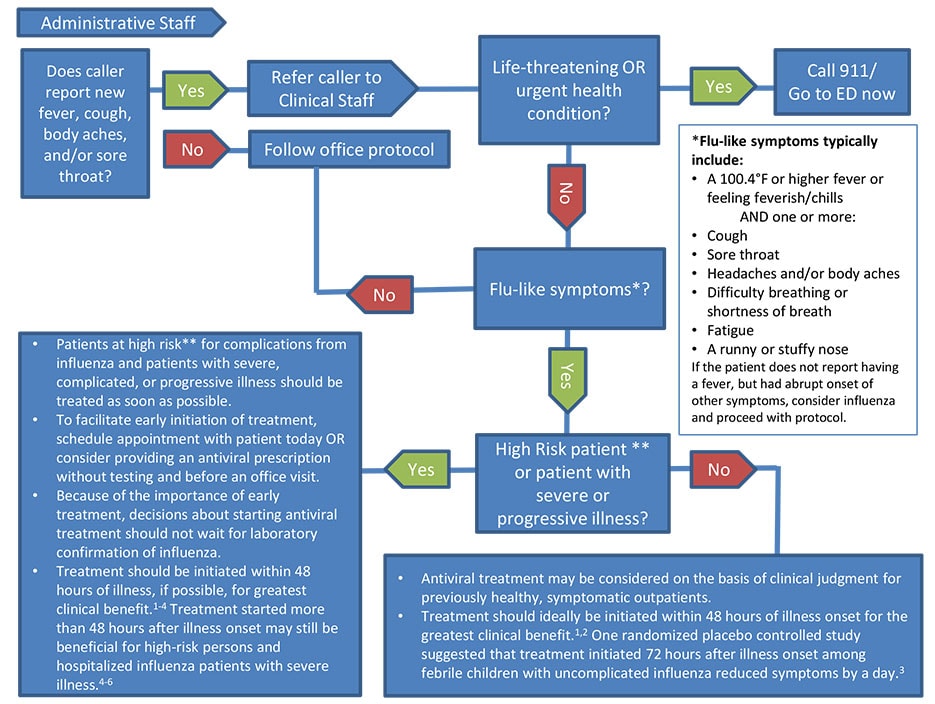Key points
- The flow chart is designed to be used when influenza viruses are circulating in the community.
- This tool may help medical office staff triage calls from patients with flu-like symptoms and identify when it might be appropriate to initiate antiviral treatment before an office visit.
Strategies
Patient triage or prescribing of prescription medicines should be done under the direction of a licensed physician or other licensed provider. More information is available at Influenza Antiviral Medications.
antivirals-protocol-flowchart-updated

* Flu-like symptoms
Keep Reading:
Signs and Symptoms of Flu
** High-risk patients
Keep Reading:
People at Increased Risk for Flu Complications
- Malosh RE, Martin ET, Heikkinen T, et al. Efficacy and Safety of Oseltamivir in Children: Systematic Review and Individual Patient Data Meta-analysis of Randomized Controlled Trials. Clin Infect Dis. 2017 Nov 23. doi: 10.1093/cid/cix1040. [Epub ahead of print]
- Dobson J, Whitley RJ, Pocock S, et al. Oseltamivir treatment for influenza in adults: a meta-analysis of randomised controlled trials. Lancet. 2015 May 2;385(9979):1729-1737.
- Fry AM, Goswami D, Nahar K, et al. Efficacy of oseltamivir treatment started within 5 days of symptom onset to reduce influenza illness duration and virus shedding in an urban setting in Bangladesh: a randomised placebo-controlled trial. Lancet Infect Dis. 2014; 14(2): 109-18.
- Venkatesan S, Myles PR, Leonardi-Bee J, et al. Impact of Outpatien Neuraminidase Inhibitor Treatment in Patients Infected With Influenza A(H1N1)pdm09 at High Risk of Hospitalization: An Individual Participant Data Metaanalysis. Clin Infect Dis. 2017 May 15;64(10):1328-1334.
- Muthuri SG, Venkatesan S, Myles PR, et al. Effectiveness of neuraminidase inhibitors in reducing mortality in patients admitted to hospital with influenza A H1N1pdm09 virus infection: a metaanalysis of individual participant data. Lancet Respir Med. 2014 May;2(5):395-404.
- Hsu J, Santesso N, Mustafa R, et al. Antivirals for treatment of influenza: a systematic review and meta-analysis of observational studies. Ann Intern Med. 2012 Apr 3;156(7):512-24
